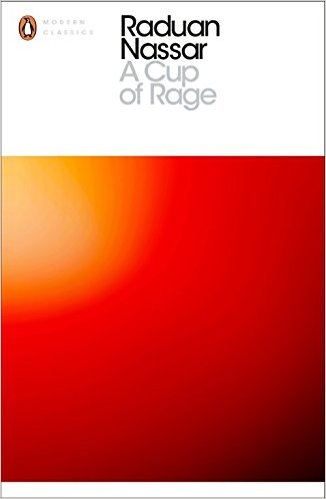 A Cup of Rage by Brazilian author Raduan Nassar is without a doubt the odd one out on this year’s long list for the Man Booker International prize. 80-year old Nassar is the oldest nominee and at a mere 64 pages, his book is by far the shortest on the list. It has also been around for the longest. Originally published in 1978, the novel arrived in its current English version with a forty year delay.
A Cup of Rage by Brazilian author Raduan Nassar is without a doubt the odd one out on this year’s long list for the Man Booker International prize. 80-year old Nassar is the oldest nominee and at a mere 64 pages, his book is by far the shortest on the list. It has also been around for the longest. Originally published in 1978, the novel arrived in its current English version with a forty year delay.
In the run-up to the Olympic Games with the world’s attention on Brazil, this book and Nassar’s only other novel Ancient Tillage from 1975, have been released in new translations by Penguin Modern Classics. These two novels almost comprise Nassar’s entire literary output. Shortly after publishing A Cup of Rage he gave up writing and set up a model farm which he ran until 2011. Not counting a collection of short stories written in the 1960s and 70s and published in book form much later, his considerable reputation as one of Brazil’s great modernists rests on an oeuvre barely exceeding 200 pages.
The plot of A Cup of Rage is deceptively simple. It is the story of an odd couple: he, an older, conservative land owner; she, a younger, progressive journalist. He arrives at his farm, while she is already there, they spend the night making love and the next morning have an enormous fight. Nassar chronicles the descent from erotic rapture, to rage, to utter despair, in only seven chapters told in one long sentence each.
It is an amour fou, a red-hot dance of domination and submission told in the first six chapters from the perspective of the landowner, and with a liberal dose of machismo thrown in. The last chapter, like the first, entitled “The Arrival”, starts the cycle again, this time, however, shifting to her perspective.
Despite its brevity, the book is by no means an easy read. It is not the barely-there tale that matters here, but the telling. The story unfolds in breathless detail. Heaping clause upon clause, piling phrases and sentence fragments onto each other, the language threatens to overwhelm and bury the reader like the erotic passion and rage that finally crushes the narrator. The style has elements of a stream of consciousness but with the clauses separated by commas and the occasional semi-colon, it is more tightly constructed and develops its own hypnotic rhythm.
Imagination “is very quick, or its time is different, and it uses and simultaneously confuses separate and unexpected things,” Nassar’s narrator muses early on and the text spreads out accordingly in an associative cascade of words intertwining the personal, political and even spiritual. It is a web of observations, emotions and ideas that incorporates literary allusions and gross insults, the trivial, the profane and the transcendent in one big sweep.
Nassar manages to build up to and then sustain an agitated, almost manic tone in the longest section of the text, “The Explosion”, propelled by a restlessness expressed in a series of clauses searching for grammatical as much as emotional closure. A style that works itself up to a climax of fury, artfully teetering on the brink of outright hysteria and only occasionally over-egging it, as in Nasser’s (or possibly the translator’s) phrase “I started punching holes in the haemorrhagic discourse of my cerebral stroke.” Yet, even though this makes very little sense, it still conveys the irrational frenzy gripping the narrator at the height of the fight with his lover.
The style for which A Cup of Rage is rightly famous achieves the paradox of simultaneous compression and expansion. The outer world is reduced to key moments, snapshots registered by the consciousness of the narrator: the “rope of her arms”, the “brazen greenness” of the mulberry trees, the “fucking leaf-cutter ants” which, irrationally, trigger the fight between the lovers. At the same time, this insistent accumulation of detail in close-up opens inner and outer vistas that belies the shortness of the text. It is this sensuous quality of the writing that makes Nassar’s take on the battle of the sexes unique, and makes the readers’ effort of cutting a path through the torrent of words a worthwhile and rewarding exercise.
Raduan Nassar. A Cup of Rage (translated from Portuguese by Stefan Tobler). Penguin Modern Classics

A Cup of Rage is indeed an interesting choice for the Man Booker International Prize.
At 64 pages, is it a long short story or a novella?
I’ve never heard of Raduan Nassar, but it’s fascinating how he left such an impression with such a light body of work. I can count the number of Brazilian authors I’ve read in two hands, so I need to do better. I may pick this one up, since it’s a slim book and could read it in one sitting. Thanks for the recommendation.
LikeLike
You’re welcome. I hope you like it.
LikeLike